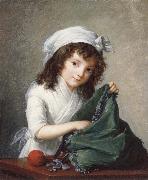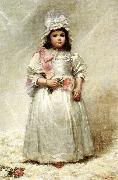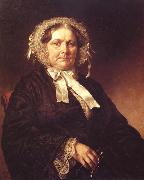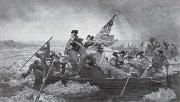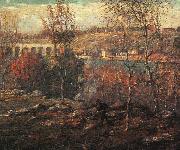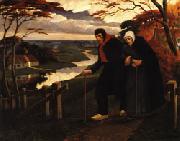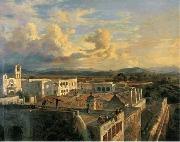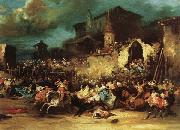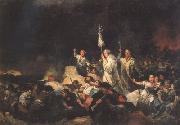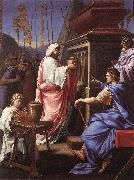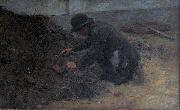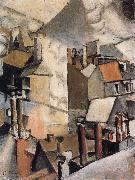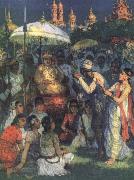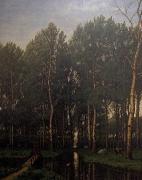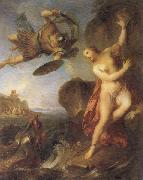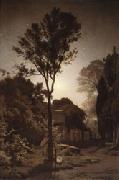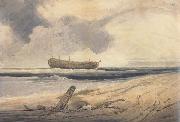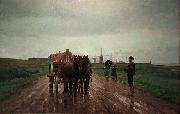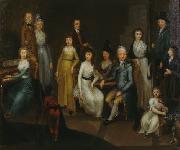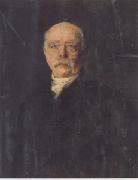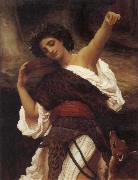|
|
|
|
|
|
|
|
|
|
 |
Emanuel Leutze
|
|
historical painter, born in Gmund, Wurtemberg, 24 May, 1816; died in Washington, DC 18 July, 1868 |
|
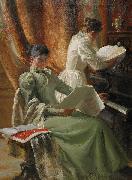 |
Emil Lindgren
|
|
painted Interior med musicerande kvinnor vid pianot in 1893 |
|
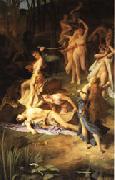 |
Emile Levy
|
|
Paris 1826 - Paris 1890.
French Academic Painter, 1826-1890.
Studied under François-Edward Picot and Abel de Pujol. |
|
 |
Emile Van Marcke de Lummen
|
|
1827-1890
Emile van Marcke was born in S??vres - into a family of artists. His father was Jean-Baptiste (1797-1848), the eldest son of Charles van Marcke and a painter who specialized not only in landscape and animal paintings, but also works on porcelain. |
|
 |
Erik Johan lofgren
|
|
Erik Johan Löfgren (15. lokakuuta 1825 Turku -- 10. joulukuuta 1884) oli suomalainen taidemaalari.
Löfgrenin vanhemmat olivat kauppias Johan Gabriel Löfgren ja Katarina Erikintytär o.s. Vahlsten. Hän opiskeli T. J. Leglerin johdolla Ruotsin kuninkaallisessa taideakatemiassa Tukholmassa 1842?C1850 ja sitten D??sseldorfin taideakatemiassa O. Mengelbergin ja F. Th. Hildebrandtin johdolla 1853?C1858.
Löfgren toimi taulujen restauroijana Tukholmassa 1842?C1853 ja myöhemmin 1870-luvulla hän oli opettajana Helsingin yliopiston piirustussalissa. Hänen maalaustyylinsä oli lyyrisen romanttista ja hän maalasi muotokuvia sekä historian tapahtumista aiheensa saaneita maalauksia. |
|
 |
Ernest Laurent
|
|
(June 8, 1859 -- June 25, 1929) was a French painter and printmaker. He was born in Gentilly and died in Bievre.
Laurent was a neo-impressionist artist whose main influences were his instructor Ernest Hebert and his friend Georges Seurat. Laurent took second prize in the Prix de Rome in 1889 and in 1890, Laurent arrived in Rome, where Hebert remained Director of the Academie de France. From Rome, he went to Assisi where he underwent a mystical experience. It would profoundly influence his art. The work he returned to Paris from Assisi was noted for its religious themes.
Over time, profound religious devotion influenced his artistic motif and religious symbolism and scenery crept into his work. This aspect of his life ran counter to Seurat's materialism and the two parted ways.
|
|
|
|
|
|
|
|
|
|
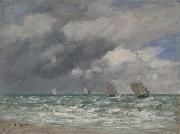 |
Eugene Louis Boudin
|
|
(12 July 1824 - 8 August 1898) was one of the first French landscape painters to paint outdoors.
Boudin was a marine painter, and expert in the rendering of all that goes upon the sea and along its shores. His pastels, summary and economic, garnered the splendid eulogy of Baudelaire, and Corot who, gazing at his pictures, said to him, "You are the master of the sky."
Born at Honfleur, France, he worked in a small art shop where Claude Monet displayed his art work Le Havre and Honfleur across the estuary of the Seine. But before old age came on him, Boudin's father abandoned seafaring, and his son gave it up too, having no real vocation for it, though he preserved to his last days much of a sailor's character, frankness, accessibility, and open-heartedness.
In 1835, his family moved to Le Havre, where his father established himself as stationer and frame-maker. He began work the next year as an assistant in a stationery and framing store before opening his own small shop. There he came into contact with artists working in the area and exhibited in his shop the paintings of Constant Troyon and Jean-François Millet, who, along with Jean-Baptiste Isabey and Thomas Couture whom he met during this time, encouraged young Boudin to follow an artistic career. At the age of 22 he abandoned the world of commerce, started painting full-time, and traveled to Paris the following year and then through Flanders. In 1850 he earned a scholarship that enabled him to move to Paris, although he often returned to paint in Normandy and, from 1855, made regular trips to Brittany.
The Beach at Villerville, 1864. Eugene Boudin. Oil on canvas. National Gallery of Art, Washington DC. (Zoomview)
Rivage de Pontrieux, Cotes-du-Nord. 1874. Eugene Boudin.
Landscape with Sunset. 1880-1890. Watercolour. Musee d'Orsay, Paris
Berck, Fishermen at Low TideDutch 17th century masters profoundly influenced him, and on meeting the Dutch painter Johan Jongkind, who already made his mark in French artistic circles, Boudin was advised by his new friend to paint outdoors (en plein air). He also worked with Troyon and Isabey, and in 1859 met Gustave Courbet who introduced him to Charles Baudelaire, the first critic to draw Boudines talents to public attention when the artist made his debut at the 1859 Paris Salon.
In 1856/57 Boudin met the young Claude Monet who spent several months working with Boudin in his studio. The two remained lifelong friends and Monet later paid tribute to Boudines early influence. Boudin joined Monet and his young friends in the first Impressionist exhibition in 1874, but never considered himself a radical or innovator.
Boudines growing reputation enabled him to travel extensively in the 1870s. He visited Belgium, the Netherlands, and southern France, and from 1892 to 1895 made regular trips to Venice. He continued to exhibit at the Paris Salons, receiving a third place medal at the Paris Salon of 1881, and a gold medal at the 1889 Exposition Universelle. In 1892 Boudin was made a knight of the Legion d'honneur, a somewhat tardy recognition of his talents and influence on the art of his contemporaries.
Late in his life he returned to the south of France as a refuge from ill-health, and recognizing soon that the relief it could give him was almost spent, he returned to his home at Deauville, to die within sight of Channel waters and under Channel skies.
|
|
|
|
|
|
|
|
|
|
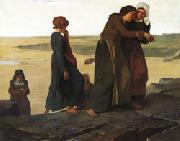 |
Evariste Vital Luminais
|
|
(October 13, 1822 - 1896) was a French painter.
He was born in Nantes. He scored a success at the Paris Salon of 1884 with the painting Flight of King Gradlon. Another Luminais' important painting is The Sons of Clovis II.
|
|
|
|
|
|
|
|
|
|
|
|
|
|
|
|
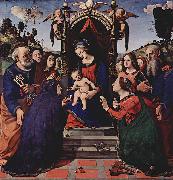 |
Fitz Henry Lane
|
|
(December 19, 1804 - August 14, 1865) was an American painter and printmaker of a style that would later be called Luminism, for its use of pervasive light.
Fitz Henry Lane was born on December 19, 1804, in Gloucester, Massachusetts. Lane was christened Nathaniel Rogers Lane on March 17, 1805, and would remain known as such until he was 27. It was not until March 13, 1832 that the state of Massachusetts would officially grant Lanees own formal request (made in a letter dated December 26, 1831) to change his name from Nathaniel Rogers to Fitz Henry Lane. As with practically all aspects of Lanees life, the subject of his name is one surrounded by much confusioneit was not until 2005 that historians discovered that they had been wrongly referring to the artist as Fitz Hugh, as opposed to his chosen Fitz Henry, and the reasons behind Lanees decision to change his name, and for choosing the name he did, are still very unclear.
|
|
|
|
|
|
|
|
|
|
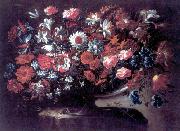 |
Francisco Lopez Caro
|
|
(1578-1662) was a Spanish painter of the Baroque period. Born in Seville, he was a pupil of Juan de las Roelas. We know very little of him, save that he painted with indifferent success in Seville until about 1660, when he went to Madrid where he spent the remainder of his life, and died in 1662. His works were mainly portraits, some of which are in private collections in Madrid, Salamanca, Granada, and Seville. |
|
|
|
|
|
|
|
|
|
|
|
|
|
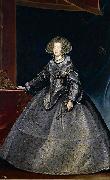 |
Frans Luycx
|
|
Frans Luycx.
Deutsch: Kaiser Ferdinand III. (1608-1657),
Brustbild.
Deutsch: um 1637/1638.
Medium. Deutsch. |
|
|
|
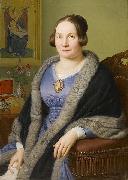 |
Franz Ittenbach
|
|
(April 18, 1813 - December 1, 1879) was a German religious painter from Königswinter, North Rhine-Westphalia, at the foot of the Drachenfels.
Ittenbach began his art education as a student of Kaufmann, then left to study under Franz Katz in Cologne. In 1832, Ittenbach became a pupil, at the age of 19, of the Desseldorf Academy, where he also received private lessons from its president, Schadow. He was a member of the Nazarene movement and associated himself mainly with three of his friends and fellow-students: Karl and Andreas Meller, and Ernst Deger. The four men travelled about in Germany, studying and painting together. From 1839 to 1842, Ittenbach lived in Italy. On his return, he stayed in Munich for some time. In 1849, he returned to Desseldorf. From 1859 until his death, he was a member of the artist club "Malkasten".
Ittenbach was exceedingly religious and persistently declined any commissions for mythological or pagan subjects. As a rule, he devoted his energies exclusively to church decoration. He would precede the execution of his greatest works with devout religious exercises, including confession and communion.
His finest paintings are said to be found at Bonn, in the church of St. Remigius, and in Breslau in a church dedicated to the same saint. There is also a remarkable "Holy Family" dated 1861, painted for Prince Liechtenstein in his private chapel near Vienna. Most of his other works can be found in various Catholic churches in Germany. His only important fresco was painted in 1844 in a church at Remagen.
Ittenbach was a popular painter in court circles, a member of most of the European academies, and the recipient of many medals and decorations. He painted a few portraits, but they were unimportant; his main work was his altar-pieces.
|
|
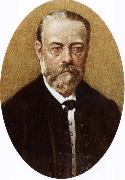 |
franz liszt
|
|
Period: Romantic (1820-1869)
Country: Hungary
Born: October 22, 1811 in Raiding
Died: July 31, 1886 in Bayreuth
Genres: Chamber Music, Choral Music, Concerto, Keyboard Music, Miscellaneous Music, Orchestral Music, Symphony, Vocal Music
|
|
|
|
|
|
|
|
 |
Frederic Leighton, 1st Baron Leighton
|
|
Frederic Leighton, 1st Baron Leighton PRA (3 December 1830 - 25 January 1896), known as Sir Frederic Leighton, Bt, between 1886 and 1896, was an English painter and sculptor. His works depicted historical, biblical and classical subject matter. Leighton was bearer of the shortest-lived peerage in history; after only one day his hereditary peerage ended with his death.
|
|
|
|
|
|
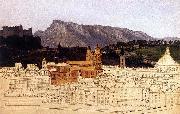 |
Friedrich Loos
|
|
was an Austrian Biedermeier style painter, etcher and lithographer. He was born in Graz on 29 October 1797. He studied at the Vienna Academy with Joseph Mössmer and also went on study tours through the Austrian Alpine regions. From 1835 to 1836 he lived in Vienna, and as of 1846 he sojourned in Rome. He then moved to Kiel, where he worked as a drawing teacher at the university as of 1863 and where he also died on 9 May 1890. In his pictures he emphasized light and color in order to loosen up his painting, as well as to harmonize and unite the details.
|
|
|







